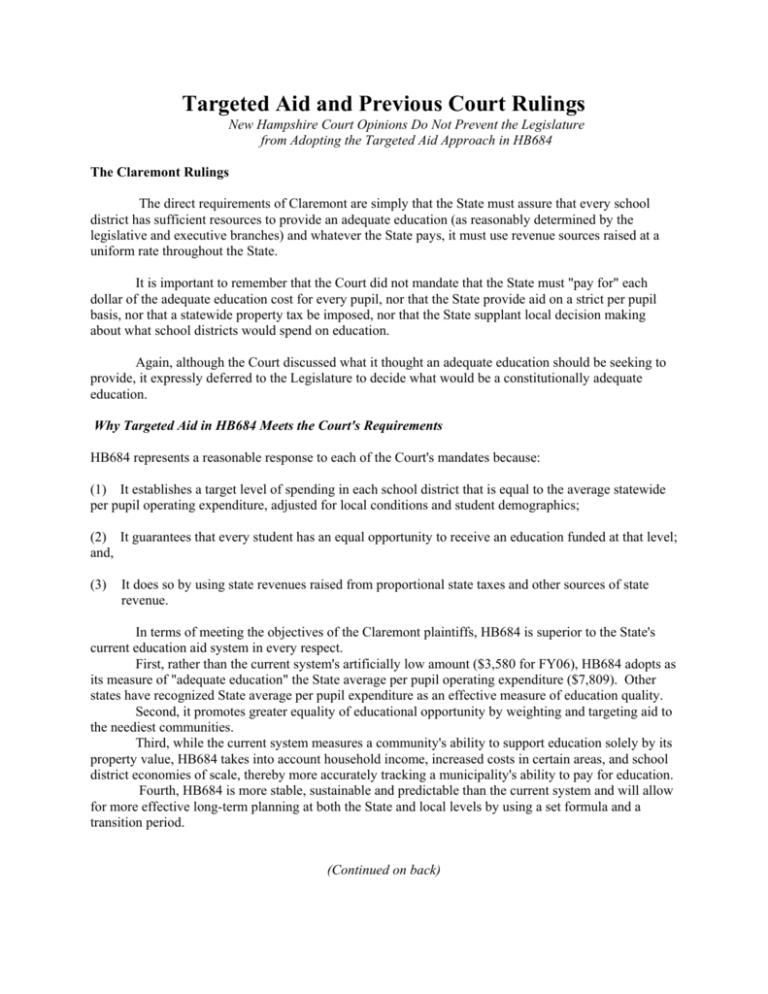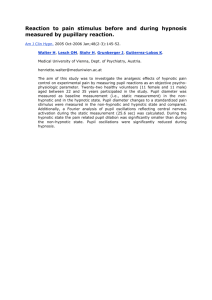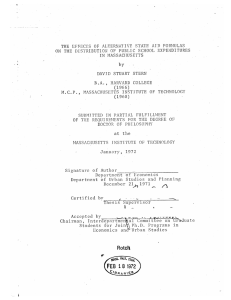Targeted Aid and Previous Court Rulings
advertisement

Targeted Aid and Previous Court Rulings New Hampshire Court Opinions Do Not Prevent the Legislature from Adopting the Targeted Aid Approach in HB684 The Claremont Rulings The direct requirements of Claremont are simply that the State must assure that every school district has sufficient resources to provide an adequate education (as reasonably determined by the legislative and executive branches) and whatever the State pays, it must use revenue sources raised at a uniform rate throughout the State. It is important to remember that the Court did not mandate that the State must "pay for" each dollar of the adequate education cost for every pupil, nor that the State provide aid on a strict per pupil basis, nor that a statewide property tax be imposed, nor that the State supplant local decision making about what school districts would spend on education. Again, although the Court discussed what it thought an adequate education should be seeking to provide, it expressly deferred to the Legislature to decide what would be a constitutionally adequate education. Why Targeted Aid in HB684 Meets the Court's Requirements HB684 represents a reasonable response to each of the Court's mandates because: (1) It establishes a target level of spending in each school district that is equal to the average statewide per pupil operating expenditure, adjusted for local conditions and student demographics; (2) It guarantees that every student has an equal opportunity to receive an education funded at that level; and, (3) It does so by using state revenues raised from proportional state taxes and other sources of state revenue. In terms of meeting the objectives of the Claremont plaintiffs, HB684 is superior to the State's current education aid system in every respect. First, rather than the current system's artificially low amount ($3,580 for FY06), HB684 adopts as its measure of "adequate education" the State average per pupil operating expenditure ($7,809). Other states have recognized State average per pupil expenditure as an effective measure of education quality. Second, it promotes greater equality of educational opportunity by weighting and targeting aid to the neediest communities. Third, while the current system measures a community's ability to support education solely by its property value, HB684 takes into account household income, increased costs in certain areas, and school district economies of scale, thereby more accurately tracking a municipality's ability to pay for education. Fourth, HB684 is more stable, sustainable and predictable than the current system and will allow for more effective long-term planning at both the State and local levels by using a set formula and a transition period. (Continued on back) The Ruling in Opinion of the Justices, 145 NH 474 (2000) (King Plan) HB684 is an entirely different approach from the King plan. The King plan proposed a 2-tier approach to education aid: a basic tier consisting of the thenexisting formula for adequacy payments payable to all communities ("baseline assistance"); and a second tier based on previous foundation aid formulas, payable only to certain needier communities ("adequacy guarantee assistance"). The Court said the total did not fully cover the Bill's projected cost of adequate education, leaving many school districts "with unfunded gaps." There are no "unfunded gaps" in HB684 because the cost of adequate education is assumed to be the statewide average per pupil operating cost of education in 2003-4, and each community's Targeted Aid grant is the difference between its education need and its fiscal capacity in relation to that cost, determined in accordance with HB684’s Targeted Aid formula. The cost of the program is supported fully and exclusively from state funds raised on a "proportional" basis. Also, the Court's ruling on the King plan came in the form of an "advisory opinion," rather than as a result of a fully litigated case. The Court has previously said that such advisory opinions do not have the same binding force as legal precedent as decisions in fully litigated cases.







